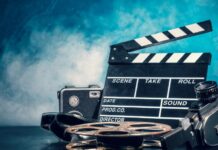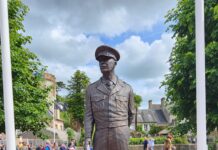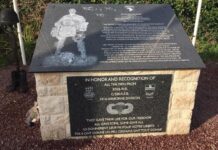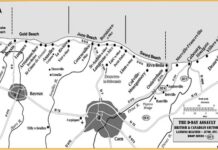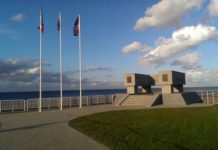Eating in Normandy…
After reading Part I, you have landed in France, rented a car at Paris Charles de Gaulle Airport, have driven to Bayeux (stopping in Giverny), checked into your hotel or AirBNB. Now you are hungry and thirsty.
Eating in France, particularly Normandy, that’s a big category — and in Bayeux, you have many options along Rue Larchee, on the same street as the massive medieval Bayeux Cathedral. This includes Au Petit Bistro, a small eatery with traditional dishes. There are also a number of low-cost restaurants facing the cathedral.

Some of the food is very regional — the moulles — the mussels — are delicious in season. Camembert or Pont leveque cheeses are a specialty and a great after dinner course. The local apple brandy, Calvados, is excellent and the cider is less alcoholic and a delight to drink.

Tripe (beef stomach lining) is very popular in Normandy among the locals, but is an acquired taste.
Shopping…
In terms of shopping, most if not all, museums have great gift shops with D-Day souvenirs. A good one is the Memorial Museum in Caen.
You can actually get D-Day souvenirs at the Carrefour in Bayeux that are at a reduced price. The main drags of Bayeux and Port en Bessin have shops that cater to many interests (clothing, gifts, food).
There is a street market in Bayeux on Saturdays in the Place San Patrice, which is one of the great open air markets in Europe. Booths contain fruits and vegetables, seafood, antiques and gifts.
American Cemetery at Omaha Beach
You’ve spent your first night in France…now is the time to hit the beaches. This is the big one…and should be your first D-Day stop — and only 11 miles from the center of Bayeux. This is the one from the movie, Saving Private Ryan.
Built on a former battlefield, and close to German bunkers on Omaha Beach, this cemetery, which is maintained by the American Battle Monuments Commission, has more than 9,300 crosses and stars of david on more than 172 acres. After WW2, families were given the option to have their sons buried in France or returned to the United States — less than a third stayed in France. It tells you something about the amount of casualties at the start of the Normandy campaign.
The 30,000 square foot Visitor’s Center that opened in May 2007 displays many artifacts from the battle. Interpretive and evocative films will provide you with a visual connection to the D-Day events on Omaha Beach. Numerous photographs and short biographies of many of the GIs who came ashore that morning add a very poignant and personal dimension to the assault.
It has two stories of exhibits, including uniforms and battlefield relics. It’s free and the first stop before visiting the moving cemetery. It has great bathrooms, which are critical in rural France.
In the cemetery, thirty-nine pairs of brothers also rest here, as well as a father and son, Col. Ollie Reed and Lt. Ollie Reed, Jr. Others include two of the four Niland brothers, which the movie Saving Private Ryan was partly based on, four women and three Medal of Honor recipients…are buried in this cemetery.
Two museums outside of the cemetery include the Big Red One museum, a small museum devoted to the 1st Infantry Division and the larger Overlord museum, which has a large collection of armored vehicles and a Bailey Bridge, V-1 buzz bomb.
Omaha Beach…
Take the drive just down from the cemetery on the D517 beach frontage road. You will see the Easy Red Sector defended by four German strongpoints (WN-66–69), where Easy and Fox Companies, 2nd Battalion, 16th Regimental Combat Team (RCT), 1st Infantry Division (ID) were to have landed in the first wave just after 0630.
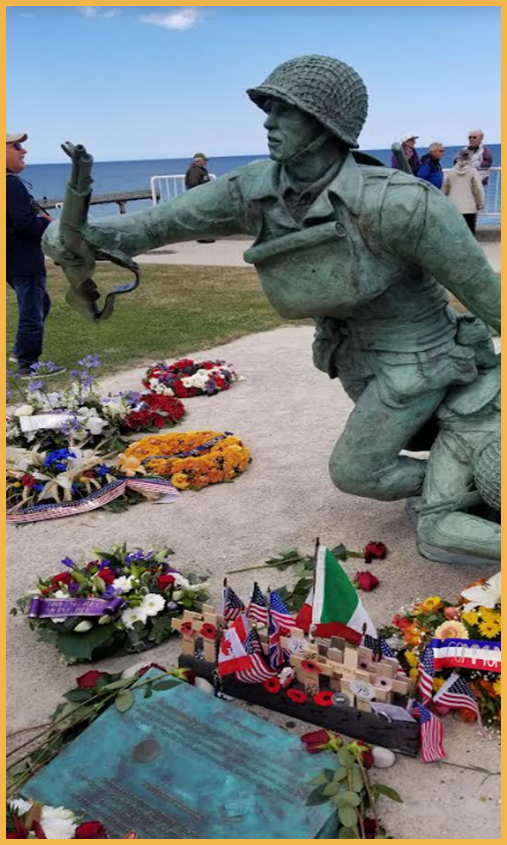
Along this road is the Dog Red, White and Green sectors of Omaha Beach where the 116th RCT of the 29th Infantry Division, a Virginia National Guard unit, fought its way ashore. Company A, 1st Battalion, 116th Infantry Regiment from Bedford, Virginia, lost 19 out of 34 of its town members in the unit, the famous Bedford Boys. Casualties were almost catastrophic…

Near the heavily defended Vierville draw at the western edge of Omaha Beach is the National Guard Memorial, on top of a German 88 gun position and the Bedford Boys memorial, which is on the cover of our book. You can take in the now peaceful beach at the Casino Café, which has outside seating, good bathrooms and a hotel. There are several monuments to the Rangers and 29th Infantry Division in the draw as you drive south on it to the D514. Look up at the cliff sides and see German emplacements with firing ports aimed to the rear to hit the attackers from behind.
Pointe du Hoc
First things first, drive to Lebrec Calvados, in a medieval chateau between Omaha Beach and Pont du Hoc on the D514. It’s a great place to grab a Calvados/Cider tasting.
Background info on Pointe du Hoc: The D-Day objective for companies D, E and F of the 2nd Ranger Battalion, commanded by Col. James E. Rudder was to take out the large German guns at Point du Hoc that endangered both Omaha and Utah beaches. Access to the Pointe du Hoc battlefield has been greatly improved in recent years with the addition of new parking lots, paths, observation platforms and restroom facilities. As you walk from the parking area out to the Pointe you now pass a row of interpretative plaques focused on the individual Rangers who fought here. The numerous renovations are now complete and the site is again fully open.
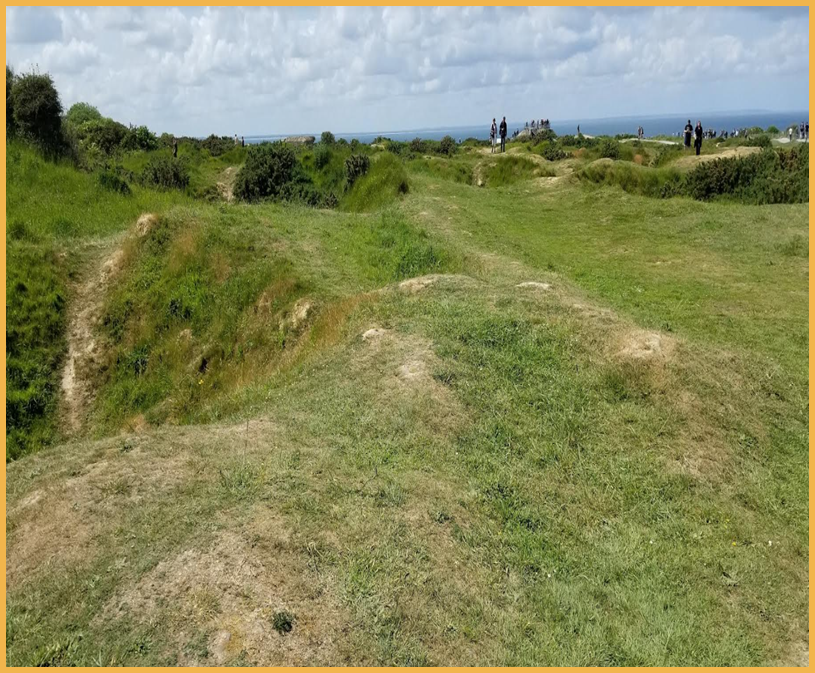
What strikes one immediately on seeing this battlefield is that it still looks like one. The sites that you have hitherto visited give little clue to the violence that transpired there 75 years ago. Not so the Pointe du Hoc. The promontory and its gun emplacements were bombed and shelled incessantly before the landings. Even though time has softened the craters and abandoned casemates, today you can still imagine the violence of the air and naval attack.
At Point du Hoc, there is a small visitor’s center that commemorates the assault of the Rangers to take out the German guns at that strategic point. The Rangers climbed ropes to destroy the emplacements.
The battlefield has deep craters made from aerial and naval bombing and German fortifications, plus the views are incredible. It’s also free. Again, it has good restrooms, which can be important, so plan accordingly. The views are incredible.
Heading to Utah Beach
After Pointe du Hoc, you can return to the major autoroute, N13 and head to Utah Beach, hitting several key Band of Brothers sites en route. It’s a 30-minute drive when there is no traffic.
Band of Brothers Sites
The celebrated Band of Brothers HBO series, featuring Easy Company of the 506th PIR, is represented heavily in the San Marie du Mont/Utah Beach area. On the road north from Ste.-Marie-du-Mont (D913) you will pass a memorial to Lt. Richard D. Winters erected by the WWII Foundation, a non-profit based in Kingston, RI. The monument, an imposing 12 feet in height, was dedicated on June 6, 2012 with some surviving members of Easy Company, 506th PIR, 101st Airborne Division in attendance.
The other significant site is Brécourt Manor, where members of Easy Company, led by Dick Winters, destroyed several large German artillery pieces that were trained on Utah Beach. The attack, in remote fields, show little…the earthen gun emplacements and trenches are no longer visible. A small memorial has been placed near the Manor that commemorates Easy Company’s nearby firefight. Look for the American and French flags flying over the memorial to mark its location.
Angloville au Plain
Another entry that’s new in our guidebook is the Church at Angloville au Plain near Utah Beach. It was here that the 101st dropped some of its paratroopers on the night/early morning of June 6. Two American medics set up an aid station in the church and initially treated American soldiers, but the Germans heard about the two and brought their own wounded troops to be treated under a white flag. The medics made the Germans put their weapons outside the church. There are blood stains still visible after nearly 80 years on the church pews.
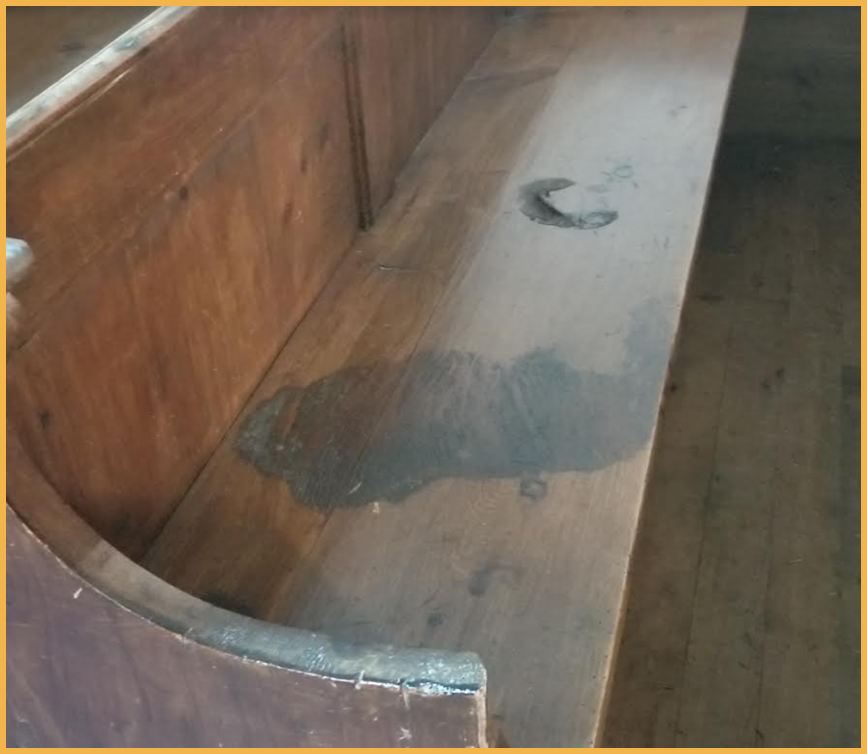
The church was also the headquarters of Col. Sink of the 506th Parachute Infantry, who was made famous in the HBO Mini Series Band of Brothers. An artillery shell went through the roof and exploded into the floor and you can still see the marks…there were also a couple of German soldiers captured a few days later hiding the bell tower.
Utah Beach
The landing on Utah Beach fared much better than its counterpart on Omaha. Medium bombers of the Ninth Air Force, streaming across the beach at 500 feet, bombed with much more accuracy than did the heavies across the bay.
In fact, the German positions at La Madeleine (strong point WN-5) were so completely disrupted by the 250 pound bombs rained on them from the B-26 Marauders and A-20 Havocs that the first wave of the 8th Infantry coming ashore there, two miles south of its designated landing areas, met minimal resistance.
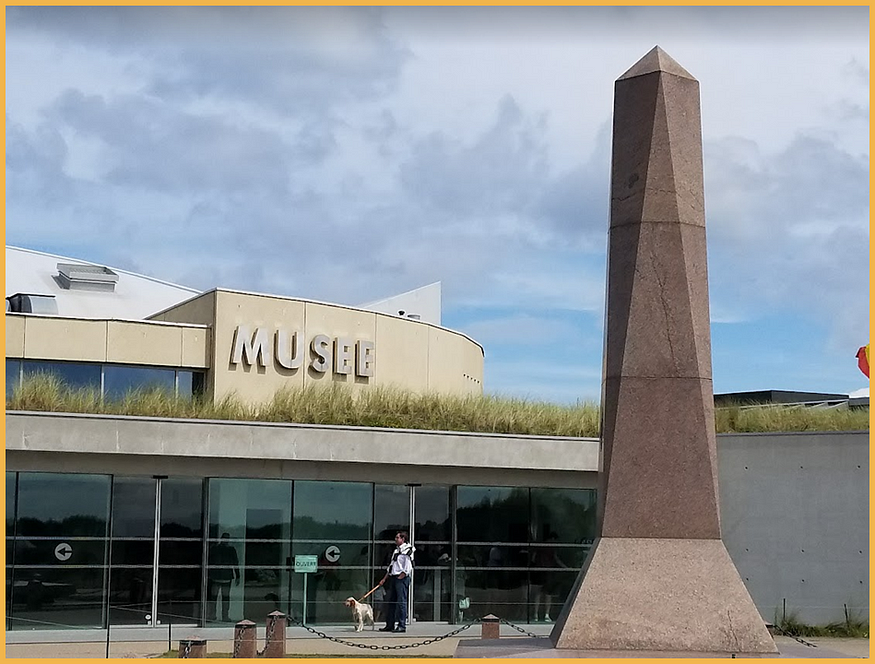
The Utah Beach Landing Museum is built around the remains of a German bunker, while it charges a modest entry fee, it has rooms full of exhibits that detail the landings there. There are vehicles, tanks, landing craft and monuments outside to view.
The Roosevelt Bar, named for BG Ted Roosevelt, who was Teddy Roosevelt’s son, died in Normandy, and was one of the first ashore on Utah Beach. He is buried at the American Cemetery and was awarded the Medal of Honor. The bar, which was also built on a German communications bunker, has a walls full of war memorabilia, a gift shop and good drinks/pub fare. It has bathrooms.
The Airborne Sites
Besides the Band of Brothers sites we discussed, the two major towns for the June 6, 1944 airborne operations are St. Mere Eglise and Carentan. The two Airborne Divisions, the 101st and 82nd were scattered across a wide area during the early morning hours of June 6. The two “must sees” in Ste.-Mère-Église are the medieval church and the airborne museum. As soon as you exit your car, your eyes are going to be fixed on the church steeple. All summer long, a dummy paratrooper hangs from his chute in the same place that Pvt. John Steele came to rest. Before you take your eyes off the steeple, notice the pockmarks in the stone made by bullets.

At San Mere Eglise there is the Airborne Museum that has gliders and a simulated C-47 mockup airplane that takes you inside to get a glimpse of how it was to parachute out during the night of June 6, 1944.
In Carentan, The D-Day Experience is a gem of a museum that was located in a small house at the junction of D913 and D974 between St-Côme-du-Mont and Carentan. The building was used as a German command post on D-Day. Today, the museum has expanded into a large, new annex (The D-Day Experience) that, along with A/V presentations, exhibits a fascinating collection of mementos, uniformed mannequins and equipment used by both American and German airborne forces that fought near here. The simulated ride in the belly of a C-47 transport aircraft is especially entertaining to youngsters.
In Carentan, the is the Cole Monument where Lt. Col. Robert G. Cole led his 3rd Battalion, 502nd PR in its famous bayonet charge on June 11, 1944. A German sniper shot Cole near the Dutch town of Best during the opening days of Operation Market-Garden.
British and Canadian Beaches
Take D6 from the Bayeux traffic loop to Port-en-Bessin where you will turn east on D514, a sometimes narrow road that conveniently takes you along the three Second Army Beaches, and then lead you over the Pegasus Bridge to the Merville Battery, where memorable battles were fought on D-Day by British airborne forces. The entire distance is approximately 33 miles.
Gold Beach and the British Normandy Memorial
The biggest change since our 2019 guidebook edition is the opening of the British Normandy Memorial, maintained by the Commonwealth Graves Commission, which records the names of 22,442 people from more than 30 countries under British command who were killed in Normandy from 6 June to 31 August 1944. It’s the most significant monument in Normandy in at least 20 years. It has a striking centerpiece bronze statute of three soldiers landing on the beaches (bronze sculpture by David Williams-Ellis). It’s on a hilltop outside of Ver sur Mer near Gold Beach and has nice views of the channel and is a striking beautiful place and makes you reflect on the gallant deeds of our allies on June 6 and beyond.
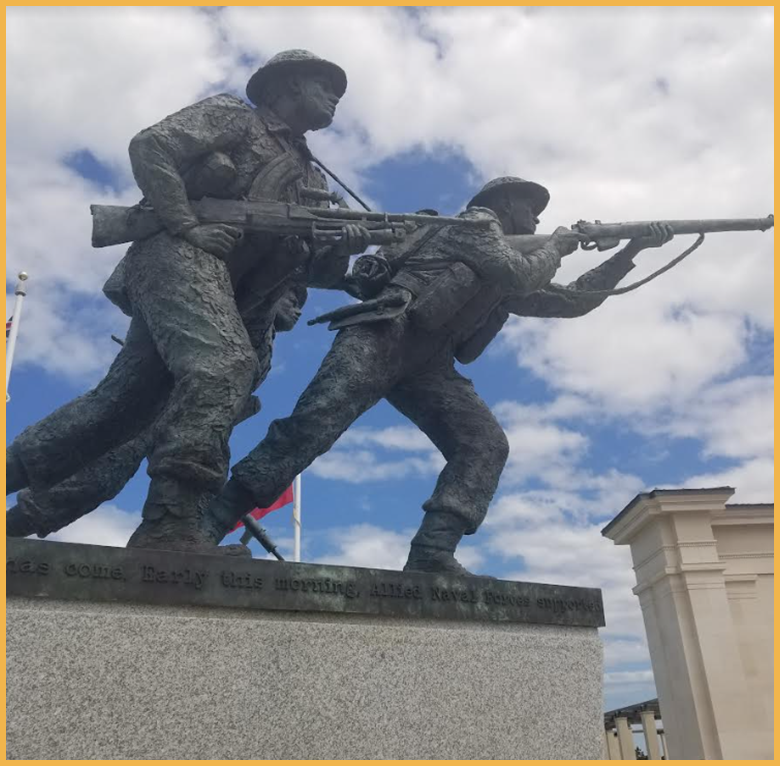
In the Gold Beach assault, Sergeant Major (CSM), Stanley Hollis, received the Victoria Cross, Britain’s highest military award and the only one awarded for D-Day heroism.
Juno Beach
The 3rd Canadian Division assaulted Juno Beach at 0745 hours on D-Day. The Juno Beach Centre housed in a stunning modern building done in the Frank Gehry style. This cultural center, opened by the Canadian non-profit Juno Beach Centre Association in 2003, presents the entire Canadian war effort, military and civilian, on the Normandy beach where Canadians stormed ashore. Juno Beach was the scene of fierce fighting on D-Day, second only to Omaha Beach, with requisite German bunkers and other war relics.
Sword Beach and the Hillman Fortification
Sword Beach marks the most eastern beach attacked on D-Day with the British 3rd Division attacking along with French and British Commandos. Along with the requisite German fortifications and monuments, there is a commanding statute of bag piper Bill Millin, who reassured soldiers attacking with his playing.
Hillman Fortification was a tough nut to crack, it’s about four miles south from Sword Beach on the D35. The British 1st Suffolks moved south to attack Hillman. The attack began a little after 1300 on D-Day. Only after a gap was blown in the section of the minefield, were the Suffolks able to break into the position and not until 2000 hours did the defenders surrender. There are trenches, tanks, pillboxes still left intact on this battlefield.
Pegasus Bridge
In the British sector a few miles inland from Sword beach is Pegusus Bridge and its Memorial Museum. It has a full sized Horsa glider that British commandos used to capture the bridge, which is on the museum grounds. You can get a drink and sandwich at the Café Gondree which is still in use next to the newer bridge nearby.
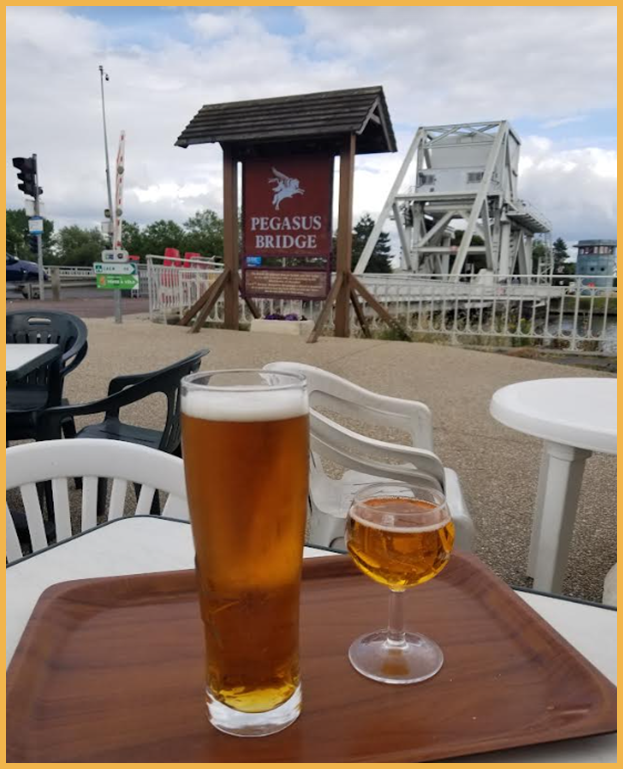
A select force, composed of men from 2d Battalion, Oxfordshire and Buckinghamshire Light Infantry and the Royal Engineers, commanded by Major John Howard, were given the daunting task of capturing the bridges over the Orne River and Canal in a pre-dawn assault. Six Horsa gliders were to carry Howard’s force in a night-time coup de main at the two bridges. In an outstanding navigational feat, the three glider pilots were able to crash land within 50 yards of the canal bridge.
Relics on the Battlefield
One of the biggest war relics still on the battlefield are the remains of the Mulberries, the floating artificial harbors emplaced off of Omaha and Gold Beaches. You can still see Mulberry A off of Omaha Beach, which was destroyed by a storm in July 1944. Mulberry B is in good shape near Arromanches.
These Mulberries helped to unload men, equipment, vehicle supplies until Cherbourg and other ports were taken. The battery at Longues sur Mer on the D-15 between Port en bessin and Arromanches has four German guns intact that were to guard against seaborne attack. There is an old Stuart light tank is still at Deadman’s Corner in Carentan near the D-Day Experience Museum. It is known as Deadman’s Corner because of a dead crewman in the tank that soldiers passed en route to the town.
Many of the relics found over the years are in the local war museums like the Omaha Beach Museum, with German 88 antiaircraft guns and even pillboxes with war damage. On a personal note, a friend was standing on top of the bluffs at Omaha Beach a few years ago and kicked the dirt and a fired .50 caliber shell casing came up. He mounted it on a plaque and gave it to an old professor. It’s his own war relic.
FINAL THOUGHTS
You can do this. If you can rent a car and drive in the United States, you can do the same at the Paris airports and drive 3 hours to Normandy. It is not a remote destination such as Iwo Jima in the Pacific, where you need special access via an expensive tour to get to. Despite its dark history, it’s a beautiful region with good food. Plus the people are genuine, sincere and it is safe. Many residents of Normandy also have family members who were there during the German occupation and Allied invasion. They love Americans and often talk about their own family members. It will be a very worthwhile trip — a trip of a lifetime.
Much more information can be found in our newly updated guidebook, The D-Day Visitor’s Handbook, published by Skyhorse, and on Amazon. Please go to our website, www.militaryhistorytraveler.com for more history and travel information. We are always seeking feedback, good and bad, about the guidebook, so please contact us with your recommendations.





